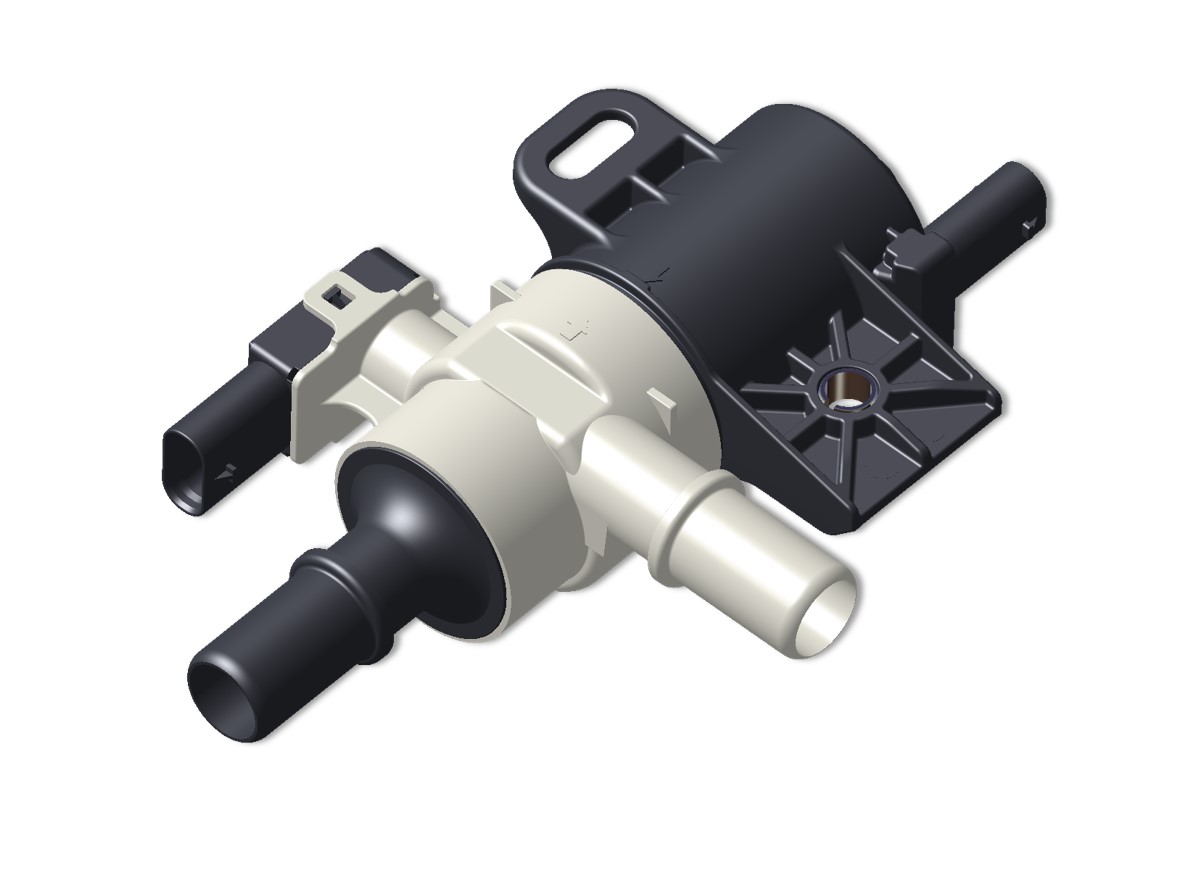KAYSER FTIV – Emission control for a clean future
In vehicles with petrol engines, fuel vapours are produced due to the tendency of the fuel to permanently outgas during vehicle operation or storage in the tank. Those vapours must be prevented from escaping into the atmosphere to protect the environment and comply with emission regulations. In a classic vehicle with a combustion engine, they are stored, in a KAYSER activated carbon canister and successively fed to the engine depending on the load point, where they are largely rendered harmless by post-combustion.
Since the molecules of petrol are very small and therefore volatile, the fuel vapours must be discharged regularly in order to prevent the climate-damaging vapours from uncontrolled escaping out of the tank system. Due to the lack of combustion in all electric driving mode, vapours can’t be processed. As a result, the fuel vapours must be stored in the fuel tank until they are next passed into the combustion engine. This storage leads to an increase in pressure in the tank, which places increased demands on the entire tank system and the emission control and must therefore be regulated.
This is where the KAYSER FTIV comes in. Firstly, it reliably shuts off the tank and thus prevents fuel vapours from escaping into the environment and regulates the internal tank pressure within the design parameters of the tank system in order to protect its components. Secondly, by actively reducing the overpressure and transferring the fuel vapours to the KAYSER activated carbon canister, it allows the preparation for the fuelling process.
In this way, with the help of the KAYSER FTIV, the emission regulations for hybrid vehicles and combustion engines with petrol engines that are permitted globally in the respective markets can be complied with and vehicle emissions can be reduced to protect the environment.
In vehicles with petrol engines, fuel vapours are produced due to the tendency of the fuel to permanently outgas during vehicle operation or storage in the tank. Those vapours must be prevented from escaping into the atmosphere to protect the environment and comply with emission regulations. In a classic vehicle with a combustion engine, they are stored, in a KAYSER activated carbon canister and successively fed to the engine depending on the load point, where they are largely rendered harmless by post-combustion.
Since the molecules of petrol are very small and therefore volatile, the fuel vapours must be discharged regularly in order to prevent the climate-damaging vapours from uncontrolled escaping out of the tank system. Due to the lack of combustion in all electric driving mode, vapours can’t be processed. As a result, the fuel vapours must be stored in the fuel tank until they are next passed into the combustion engine. This storage leads to an increase in pressure in the tank, which places increased demands on the entire tank system and the emission control and must therefore be regulated.
This is where the KAYSER FTIV comes in. Firstly, it reliably shuts off the tank and thus prevents fuel vapours from escaping into the environment and regulates the internal tank pressure within the design parameters of the tank system in order to protect its components. Secondly, by actively reducing the overpressure and transferring the fuel vapours to the KAYSER activated carbon canister, it allows the preparation for the fuelling process.
In this way, with the help of the KAYSER FTIV, the emission regulations for hybrid vehicles and combustion engines with petrol engines that are permitted globally in the respective markets can be complied with and vehicle emissions can be reduced to protect the environment.

